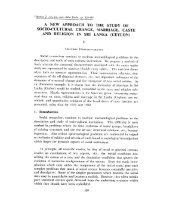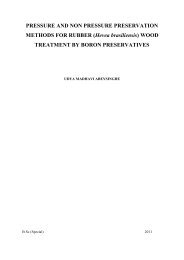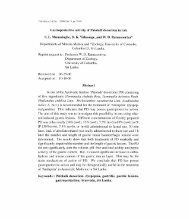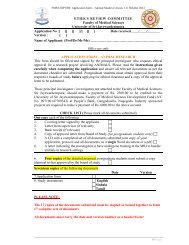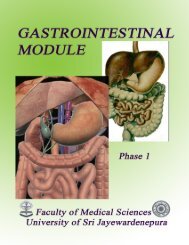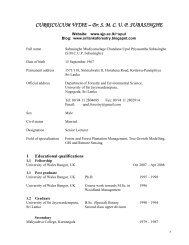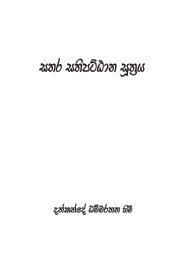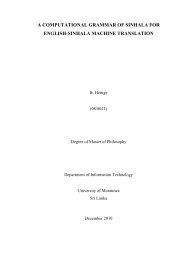Food preferences.pdf - Dl Sjp Ac Lk
Food preferences.pdf - Dl Sjp Ac Lk
Food preferences.pdf - Dl Sjp Ac Lk
- No tags were found...
Create successful ePaper yourself
Turn your PDF publications into a flip-book with our unique Google optimized e-Paper software.
<strong>Food</strong> <strong>preferences</strong>of short nosed fruit bat 113This mixed diet of Cynopterus could simply be a response to thesimultaneous availability of fruits. Alternately, the bats may be consumingdifferent types of fruits so as to meet the energy demand and to satisfy thenutritional and mineral requirements. The comparison of the compositionofguava (most preferred food) and mango (least preferred fruit) indicates thatguava is high in energy (51 vs. 44 kcal); protein (0.9 vs 0.7g), fat (e.3 vs. O.lg)and carbohydrate (11.2 vs. 10.1g) whi Ie mango is rich in vitamins such ascarotene, thiamine, riboflavin, niacin and vitamin C (Perera et al. 1979; allvalues are per l00g of edible portion). Therefore, it can be assumed that themixed diet of Cynopterus is a profitable way of maintaining the energy andnutrient requirement of bats. It has been shown that the diet of fruit batsconstitute of fruits, seeds, pollen, nectar, leaves and sometimes insects tooto meet the nutrient requirement in diet (Sosa & Soriano, 1996; Kunz &Diaz,1995). Uieda et aZ. (1998) reported that the diet of fruit eating batArtibeus Ziteratus consists of 23 fruit types.As yet data on consumption of fruit of Sri Lankan bats are notavailable and this is the first study to provide such data. The daily consumptionof bats used in this study was almost double their body weight. This farexceeds the daily food intake of some of the other species of bats (commonvampire bat: 132% of the body weight: fruit bat- Egyptain Dog bat :45% ofbody weight: Gizimek' s Encyclopedia of Mammals, 1990). There could beseveral reasons for this high intake of food. It has been reported that batsconsume a great quntity of fruits or feed selectively on protein rich fruits asmany fruits are low in protein content (Kunz & Diaz, 1995). Secondly, thismay be partly due to their method offruit processing. Bats consume only thefleshy parts of the fruits and after thorough mastication, juice is swallowedand the rest is discarded as a fibrous wad, so that only a fraction of fruitsenters into the gut. Since our calculations on the food consumption ofCynopterus were based on the weight loss of the fruits provided, partsdropped during feeding as well as food pellets discarded by the bats aftermastication were also included as fruits consumed. Finally it should berecognised that very high moisture content (70% to 80%) is found in freshfruits (Perera et al. 1979).It was evident that a single Cynopterus attacked about eight fruits pernight and if this is so in the field conditions, they are most likely to causeconsiderable damage to fruit plantations. Cynopterus is one of the commonestfruit eating bats in Sri Lanka. This is evident by the fact that in a three yearisland wide surey during which eight species were caught by mist netting (58sites) 53% were Cynopterus sphinx (unpublished observation). This indicatethat these bats alone can cause considerable damage to locally grownfruits. This is in agreement with the claim made by fruit growers that batscause heavy damage to their fruits (mango, rambutan). Cynopterus thrive in



